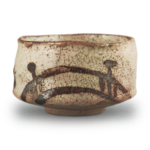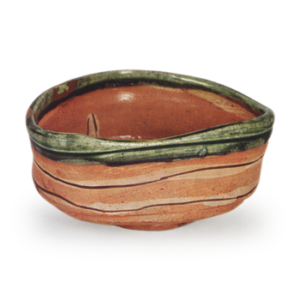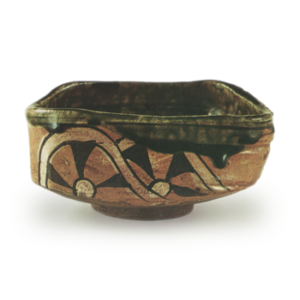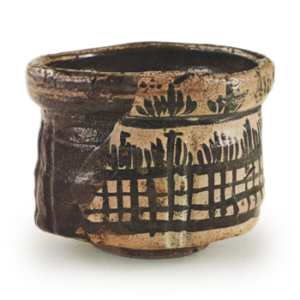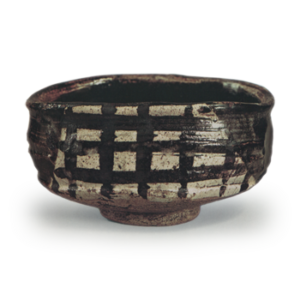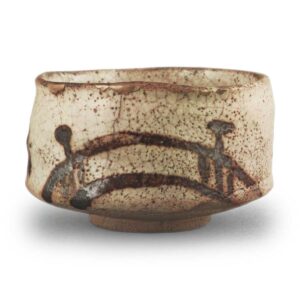
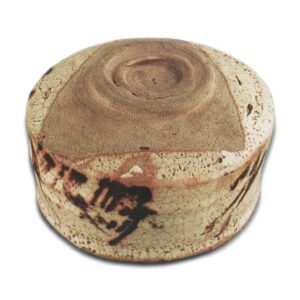
Height: 8.0-8.5cm
Diameter: 12.2-12.8cm
Outer diameter of foot ring: 6.3cm
Height of foot ring: 0.7cm
Shino tea bowls made in the Sumiyoshi style, such as the Sumiyoshi and Ushiwaka styles, have several common features in terms of their production. In terms of shape, the waist is large and protrudes outward, the body is slightly constricted, and the waist to the rim is narrow and steeply cut. The foot ring is a low double foot ring, and many of them are probably attached foot rings. The base is wide and large, and is almost a perfect circle. In addition, the triangular exposed parts created by the carving of the mountain path-like pattern and the glaze are clearly visible on the base. The clay is a whitish mogi clay. Also, in the interior, there are always three very small, rice-grain-sized marks. In general, they have a gentle, meek appearance.
This tea bowl also has the above characteristics, but perhaps because the firing was a little strong, it has a somewhat stronger feel than other tea bowls. The glaze on the surface of the above example, which is covered in pinholes, also has a slightly rough crackle, and the coloring of the iron in the cast-on design is particularly intense, with a strong iron-like coloration in the bridge design. In addition to the bridge, the design also includes reeds, horsetails and cypress fences, all of which have a strong coloration.
The distinctive feature of this teacup is that the middle of the body is knotted like a bamboo joint. Also, near the rim, there is a part that is slightly curved inwards, which also breaks the monotony and gives this teacup a unique charm.
The foot ring is a double foot ring. From the fact that it looks like it has been smoothed by hand, it is probably not a foot ring attached to the body.
There are three small marks on the inside of the bowl, which are hidden by the glaze, and there is also a mark on the right side of the bridge.
There are several places where the gold has been repaired around the rim, and it is thought that this was done to fill in the loose glaze.
On the inside of the lid there is the name “Shino”, but the person who wrote it is unknown. The history of the vessel is also unknown.

